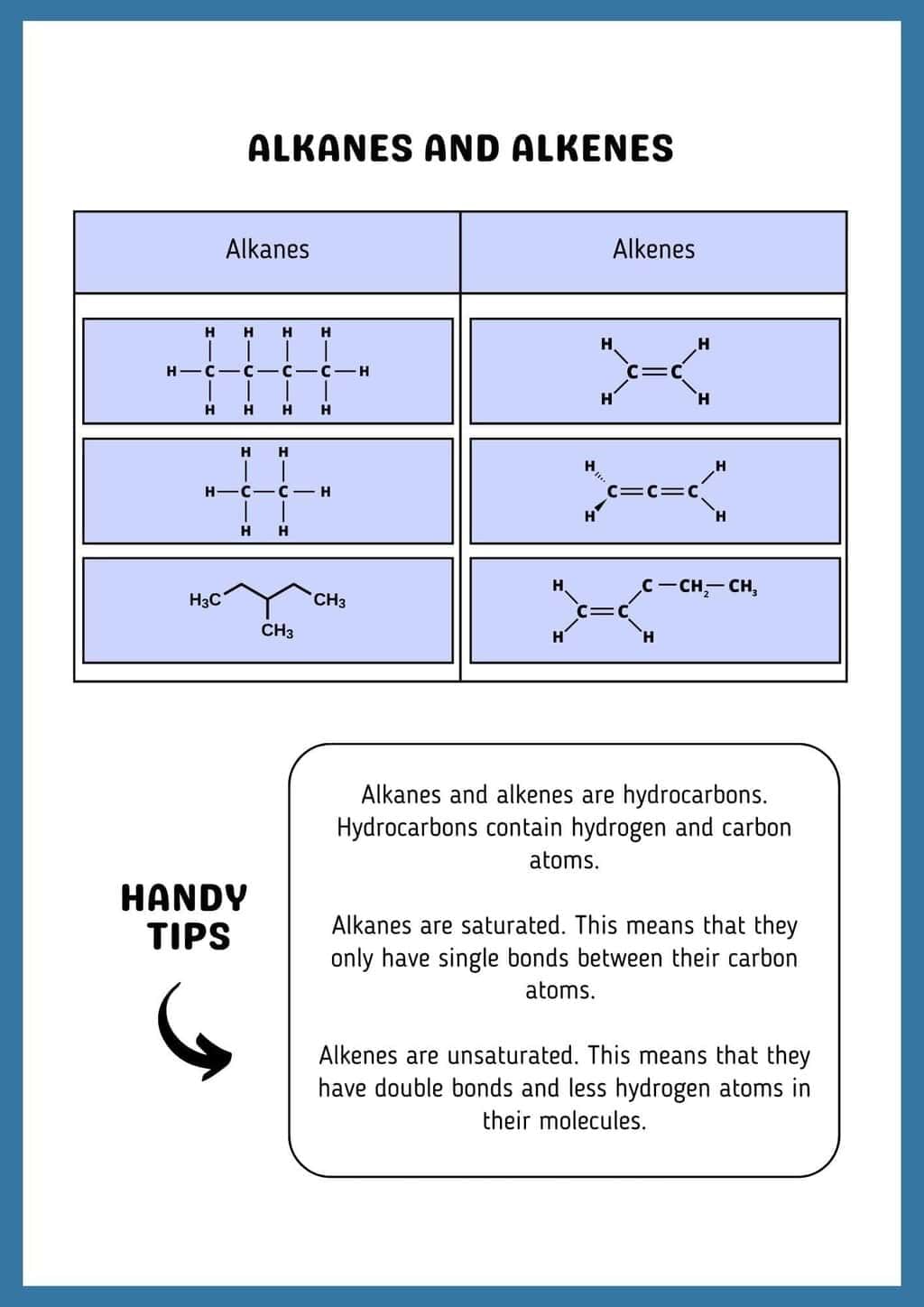NEET Exam > NEET Notes > Chemistry Class 11 > Infographic: Hydrocarbons
Infographic: Hydrocarbons | Chemistry Class 11 - NEET PDF Download

The document Infographic: Hydrocarbons | Chemistry Class 11 - NEET is a part of the NEET Course Chemistry Class 11.
All you need of NEET at this link: NEET
|
114 videos|263 docs|74 tests
|
FAQs on Infographic: Hydrocarbons - Chemistry Class 11 - NEET
| 1. What are hydrocarbons and how are they classified? |  |
Ans.Hydrocarbons are organic compounds composed entirely of hydrogen and carbon atoms. They are primarily classified into two main categories: aliphatic hydrocarbons and aromatic hydrocarbons. Aliphatic hydrocarbons can be further divided into alkanes (saturated), alkenes (unsaturated with double bonds), and alkynes (unsaturated with triple bonds). Aromatic hydrocarbons contain one or more benzene rings and exhibit unique stability and reactivity due to resonance.
| 2. What is the significance of hydrocarbons in daily life? |  |
Ans.Hydrocarbons play a crucial role in daily life as they are the primary constituents of fossil fuels, including petroleum, natural gas, and coal. They are used as energy sources for transportation, heating, and electricity generation. Additionally, hydrocarbons are raw materials for the production of various chemicals, plastics, and pharmaceuticals, making them integral to modern industry and consumer products.
| 3. How do hydrocarbons contribute to environmental issues? |  |
Ans.Hydrocarbons can contribute to several environmental issues, particularly in terms of pollution and climate change. The combustion of hydrocarbons releases carbon dioxide (CO₂), a greenhouse gas that contributes to global warming. Additionally, the extraction and transportation of hydrocarbons can lead to oil spills and habitat destruction. Proper management and transition to renewable energy sources are essential to mitigate these environmental impacts.
| 4. What are the methods for the extraction of hydrocarbons? |  |
Ans.Hydrocarbons can be extracted through various methods, including drilling, hydraulic fracturing (fracking), and thermal recovery techniques. Conventional drilling is used for easily accessible oil and gas deposits, while fracking is employed to extract hydrocarbons from shale formations by injecting high-pressure fluids. Thermal recovery involves injecting steam into heavy oil reservoirs to reduce viscosity, allowing the oil to flow more freely.
| 5. What are some common reactions involving hydrocarbons? |  |
Ans.Common reactions involving hydrocarbons include combustion, substitution, and addition reactions. In combustion, hydrocarbons react with oxygen (O₂) to produce carbon dioxide (CO₂) and water (H₂O), releasing energy. Substitution reactions often occur in alkanes where a hydrogen atom is replaced by another atom or group, while addition reactions, typical of alkenes and alkynes, involve the addition of atoms across the double or triple bonds, respectively.
Related Searches





















